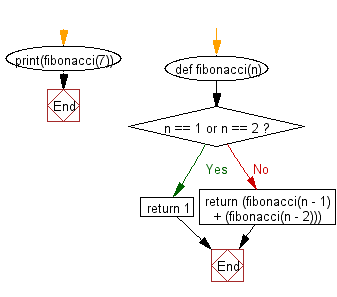
So, we will iterate till we are able to fill the list with N Fibonacci terms. In Python, we can use negative indexing to get the last 2 values of the list as shown below. Now, to calculate the second term, we will take out the last 2 values from the list and add them. So, we have the 0th and 1st terms already in the list. Also, the terms of the Fibonacci series start from 0. These are the first 2 terms of the Fibonacci series. So, we can use this relation to print the Fibonacci series. the Nth term is the sum of (N-1)th and (N-2)th terms. So, we have understood the relation between the Fibonacci terms i.e. Python Program to Print the Fibonacci series We have to print the Fibonacci Series till Nth term. This integer will denote the number of terms in the Fibonacci series.
Fibonacci python recursion how to#
How to Print Fibonacci Series in Python till N Terms So, now that we know the concept of the Fibonacci series, let us understand the how to print the Fibonacci series in Python till N terms.

So, in general, we can say that the following relation holds for all the Fibonacci terms after 1st term: This behavior continues throughout as shown below.

Now, the rest all the terms are the sum of the previous 2 terms. So, we say that the 0th Fibonacci term is F0 = 0 and the 1st Fibonacci term is F1 = 1. The index of the first term is 0 and the index of the second term is 1. The first two terms of the series are fixed. The Fibonacci Series is a special series in mathematics. So, let’s start first by understanding the meaning of the Fibonacci series.

We will discuss the meaning of the Fibonacci series, the Fibonacci Series program in python using iteration, and the Fibonacci series in Python using recursion. In this article, we will discuss the Fibonacci series in Python.


 0 kommentar(er)
0 kommentar(er)
